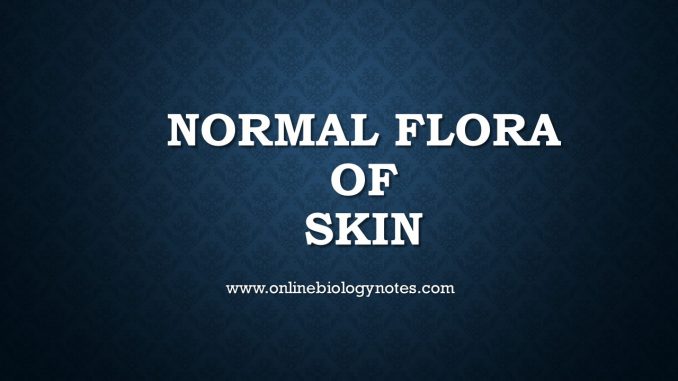
Skin microflora
- Human skin has relatively fewer number and types of normal flora. Skin consists of outer epidermis, inner dermis with hair, sweat and sebaceous gland. Many of these components discourages the growth of microorganism in skin.
- Number of normal flora differs depending on location and types of skin. Relatively moist and shaded skin such as skin of genital areas are rich in normal flora.
Characteristics of skin that discourage microflora are:
- Dryness: skin is relatively dry. Most microorganisms cannot grow in dry skin. Microorganism require moisture to grow.
- Low pH: skin has low pH of 3-5. Most bacteria are inhibited by acidic p H of skin.
- Inhibitory components: sweat and sebaceous gland’s secretion also inhibits the normal flora in skin. Sweat contains salt, similarly sebum contains lactic acid and fatty acids which are inhibitory component to bacteria.
Types of microflora in skin:
1. Resident microflora:
- These microorganisms are the true normal flora of skin. They can survive, live and multiply in skin.
- Examples: Staphylococcus epidermidis, S. aureus, Propionibacterium acne
- Staphylococcus epidermidis and S. aureus are found in epidermis whereas Propionibacterium acne is associated with sebaceous gland in dermis.
- Fungi are generally seen under nails and between toes. eg. yeasts, Candida albicans
2. Transient microflora:
- Transient microorganisms cannot multiply in skin and are usually die after short period of time.
- Various factors influences the transient microflora in skin. Such as
- characteristics of skin: dryness, pH and inhibitory component of skin
- Weather condition: increased moisture and temperature of skin causes increases in number of microflora.
- Personal hygiene: unclean individuals have greater number of microflora
- Age: children have greater number of microflora than adults.
